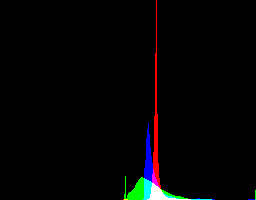The CR2 files from my Canon 5D Mk III contain three preview or thumbnail images:
Preview 1: image/jpeg, 160x120 pixels, 17837 bytes
Preview 2: image/tiff, 592x395 pixels, 1403040 bytes
Preview 3: image/jpeg, 5760x3840 pixels, 3166514 bytes
What's the purpose of the TIFF element? It's large in bytes but small in pixels. It's also very low in brightness and contrast. Much lower than the raw data.
The tiff file seems very wasteful. The CR2 is 29524589 bytes so the tiff element is almost 5% of the file. It's uncompressed and most of the bits are zero.
I produced the two histograms of the CR2 and the TIFF preview showing how different they look.
RAW
TIFF
I have to say I am not convinced by these, I think they are linear rather than logarithmic and only have 256 columns. If anyone can recommend a better command line histogram generator than ImageMagick I would be indebted.



